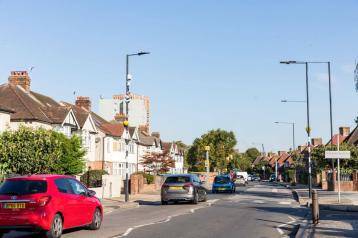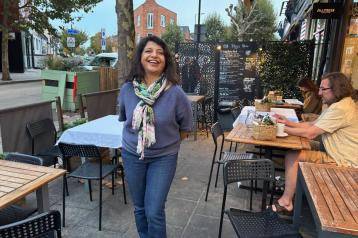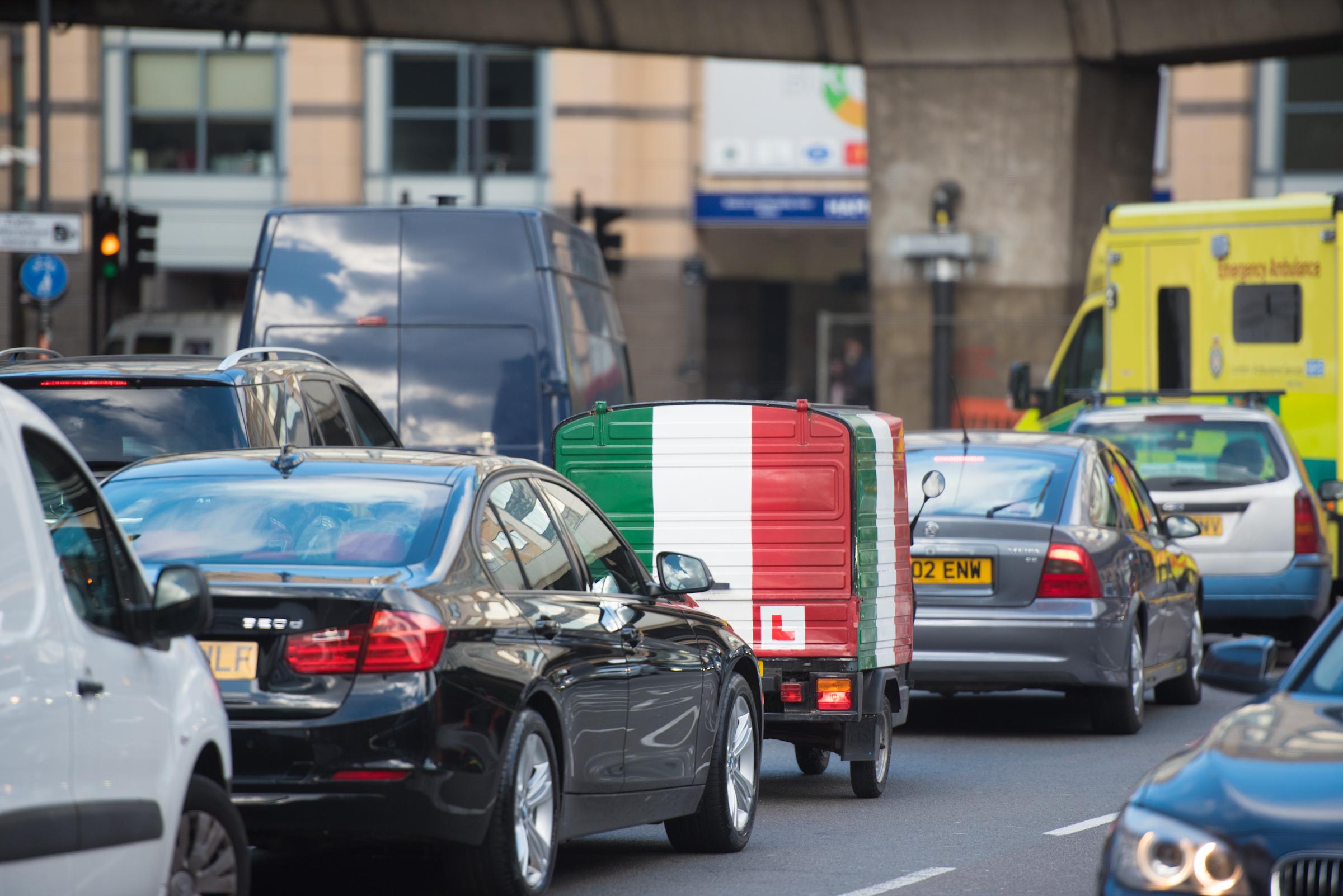
Heavy traffic on Hammersmith Broadway
Toxic air is swamping Hammersmith again as drivers return to the roads after Covid.
As local air pollution levels rise, Hammersmith & Fulham Council is sounding the alarm as it encourages greater use of public transport, electric vehicles, cycling and walking.
H&F Council's 2022 air quality report (pdf 1.84MB) shows that local levels of nitrogen dioxide (NO2) exceeded the annual average national limits of 40 µg/m3 and World Health Organisation Air Quality Standards of 10 µg/m3 last year.
Air quality data
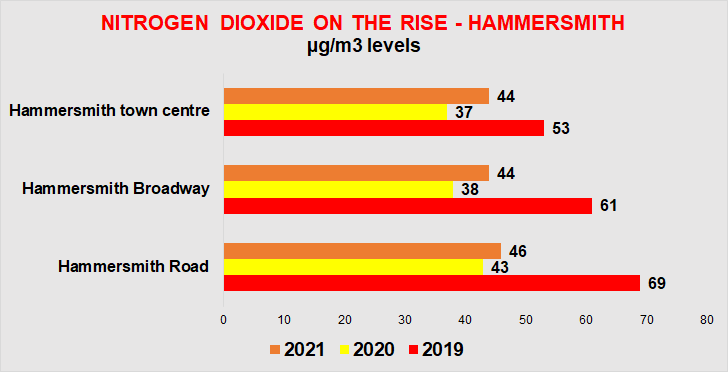
Hammersmith Town Centre
- 2019 - 53 µg/m3
- 2020 - 37 µg/m3
- 2021 - 44 µg/m3
Hammersmith Broadway
- 2019 - 61 µg/m3
- 2020 - 38 µg/m3
- 2021 - 44 µg/m3
Hammersmith Road
- 2019 - 69 µg/m3
- 2020 - 43 µg/m3
- 2021 - 46 µg/m3
The latest spike follows a temporary drop in 2020 during the Covid pandemic. And it shows that air quality is – again – worsening to unhealthy levels in Hammersmith.
"This latest research showing how exposure to such air pollution increases the odds of developing cancer comes after other studies linking our dirty air to heart disease, Alzheimer's disease and damage to children's organs and brain development," said Cllr Stephen Cowan, Leader of Hammersmith & Fulham.
"Filthy air is a threat to all of us. We want all our residents to be safe in the knowledge that they live in a Clean Air Neighbourhood. And that's what we're working to deliver."
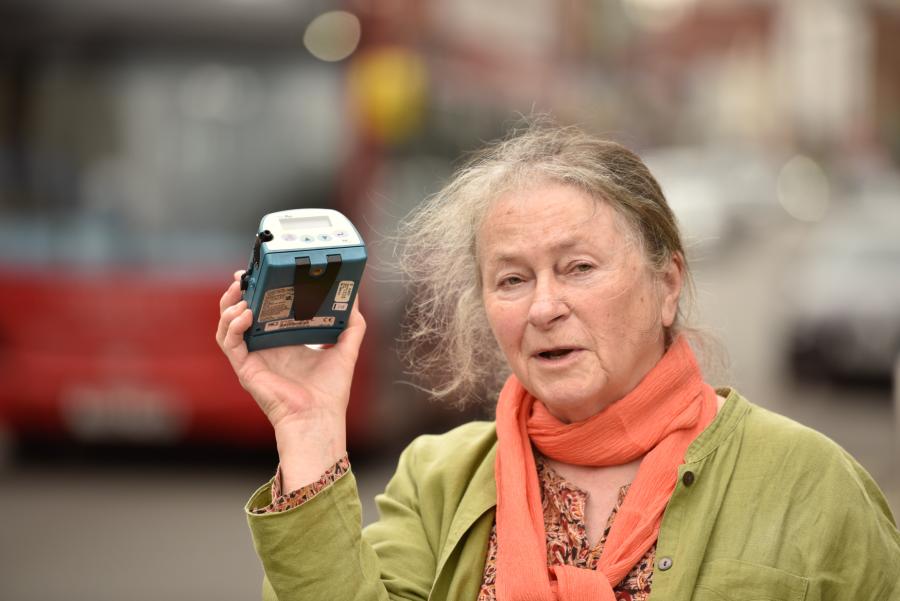
Toxic air
Nitrogen dioxide is a highly toxic gas released into the air by petrol and diesel cars.
It is one of the biggest components of man-made air pollution – the largest environmental risk to public health in the UK according to Public Health England.
Nearly one in seven early deaths in Hammersmith & Fulham are attributed to nitrogen dioxide air pollution – the eighth highest level in London according to King's College London. A further 8.1 per cent of early deaths per year are attributed to small particulate matter.
There is growing medical evidence highlighting the negative impact pollution has on the lungs, brains and general health of residents.
A study conducted by the Royal College of Physicians has linked it to a number of health problems including lung cancer, asthma, stroke and heart disease, diabetes, obesity, dementia and – in the long run – people's life expectancy. It attributes around 40,000 yearly deaths in the UK to exposure to outdoor air pollution.
And a new study has linked air pollution to deaths – by comparing air pollution particles to "the ignition spark on a gas hob".
"The risk of lung cancer from air pollution is lower than from smoking, but we have no control over what we all breathe," said Prof Charles Swanton of the Francis Crick Institute and University College London, who presented the findings at the European Society for Medical Oncology conference earlier this month.
Thanks to our monitoring in H&F, you can gain a more detailed understanding of the air quality near you. View current pollution levels in the borough and across London on the London Air website.
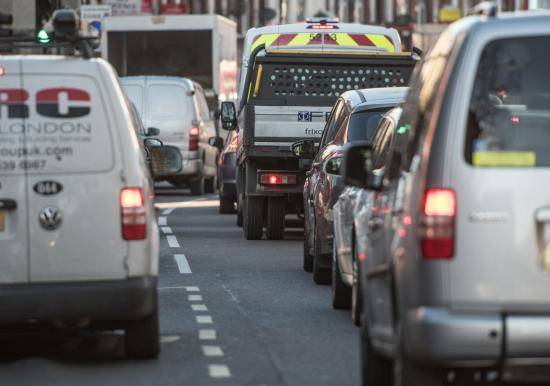
How we're reducing air pollution
H&F Council is taking urgent action to free our streets from toxic pollutants and improve the health of our residents.
We created an independent, resident-led Air Quality Commission to help us tackle the issue. And cleaning our air also offers wider environmental benefits, including noise reduction and greater road safety as we work to tackle climate change locally.
That's why we are:
Reducing road traffic
According to TfL, road vehicles are the single biggest cause of London's air pollution, and responsible for nearly half of the air pollution across London.
Since July 2020, our South Fulham clean air neighbourhood scheme has taken 8,000 cars a day off local streets. We've now installed Europe's densest Air Quality Sensor Monitoring network in this area to show the decline in air pollution the scheme is achieving. Visit H&F's air quality page to find out more.
Further plans will be announced soon.
Investing in cycling infrastructure
Whether to commute, stay fit or just for fun; bikes provide a cheap, quick and all-around convenient alternative to cars.
To help create a safe environment for cyclists of all abilities, we're continuing to expand the borough's protected cycle lane network, including the Safer Cycle Pathway in King Street and our upgraded lane in Shepherds Bush.
Electrifying our streets
H&F has created the densest network of electric vehicle chargers anywhere in the country. We're working hard to install at least one charger in every single street in the borough by the end of the year.
If you're a business local to the borough, you can currently hire one of our e-vans for your deliveries – completely free of charge. Learn more here.
Enabling local residents to travel smarter
Walking, cycling and using public transport is an easy way to avoid high fuel prices, especially during the cost-of-living crisis.
Those who want to go entirely car-free are spoiled for choice in H&F. Learn more about our pollution-busting cycle training offer for all here.
Want to read more news stories like this? Subscribe to our weekly e-news bulletin.
